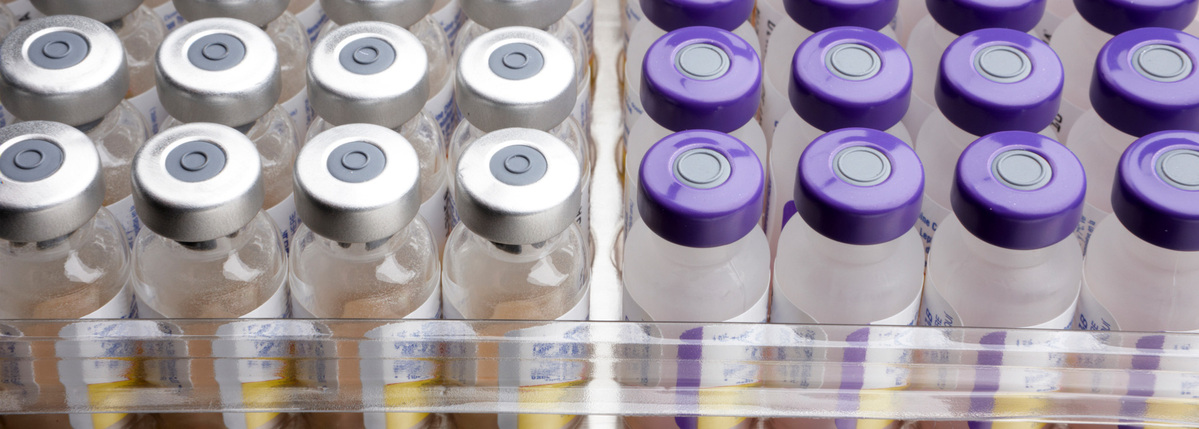Interchangeable Insulin: Here’s What You Need to Know
Newly approved insulins that are designed to work the same as existing brand name insulins are a fast-growing segment of the insulin market, expanding options for people with diabetes.
Some of these new products may be interchangeable with your current insulin prescription—similar to a generic version of medication—and could help you save money at the pharmacy. Thanks to changes in how the Food and Drug Administration (FDA) regulates insulin, it’s getting easier to produce and sell biosimilar insulins.
Before we discuss interchangeable biosimilar insulin, you should also know that there are a variety of insulins (long-acting and rapid-acting) on the market today. You may be able to try a different type even if it isn’t identical to your current insulin. Talk to your health care team or pharmacist to discuss your options!
What are biosimilar insulins and interchangeable medications?
Biosimilars are products that—like the name suggests—are very similar to an FDA-approved brand name biological medications. There is no clinical difference in how they work but they usually cost less at the pharmacy.
Interchangeable biosimilars are also what they sound like! These medications are biosimilars that have gone go through additional studies to ensure they can safely be used in exchange for a brand-name reference drug.
In most states, interchangeables can be automatically substituted for the original prescription at the pharmacy, almost like generic medications.
You can find more information on how your state regulates biosimilar interchangeability here—depending on your state, you may have to request the substitution at the pharmacy.
What interchangeable biologics are available?
Semglee, which is biosimilar to long-acting insulin Lantus (the reference product), is the first and only (so far) biosimilar insulin given interchangeable status by the FDA.
Since it was approved in 2021, Semglee can be substituted at the pharmacy for Lantus without requiring a new prescription in most cases—similar to a generic.
These medications are first approved as biosimilars and then go through additional approval processes to ensure they are safe to be used interchangeably with a reference product.
How is an interchangeable biosimilar different from a generic medication?
A “generic” label is reserved for a medication that is exactly the same as the FDA-approved, brand-name medication. By contrast, biosimilars are not identical products, but one that has been shown to work the same way in the body.
Once a drug patent has expired, other manufacturers are also able to produce the drug. These new versions of the same drug are often unbranded, which is why they are called generics. More options create competition is what drives down the price. Generics are more commonly offered for small-molecule drugs, as opposed to biologics.
Who can use interchangeable biosimilars?
If you use Lantus insulin to manage your diabetes, your pharmacist may substitute Semglee if it’s cheaper. Most states allow pharmacists to do this automatically, though not always—so familiarize yourself with the rules in your state.
Semglee is the only interchangeable insulin currently available, though many new products are in the biosimilar pipeline.
It doesn’t hurt to periodically ask your doctor or pharmacist if any newly approved insulins are good substitutes for your current prescription and may lower the cost of your diabetes management.
If you worry about affording the price of your insulin, there are resources that may help. Check out Getinsulin.org.
How interchangeable biosimilars stand to help people with diabetes
This is a win for people who use insulin to manage type 1 or type 2 diabetes, allowing for more treatment choices at the pharmacy and opportunities for savings.
Despite the fact that there haven’t been significant changes in how insulin is manufactured, list prices are soaring, causing this readily available drug to be out of reach for many individuals who rely on it to stay alive.
If you live with diabetes, you deserve choices based on what types of insulin work best for you and your unique needs. We should no longer allow insurance formularies and soaring costs to dictate a person’s right to insulin.
Hopefully, as more insulin options become available—including interchangeable biosimilar insulins—people with diabetes will see lower prices at the pharmacy.
Editor’s note: Educational content related to biosimilars is made possible with support from Mylan/Viatris, an active partner of Beyond Type 2 at the time of publication. Editorial control rests solely on Beyond Type 2.





